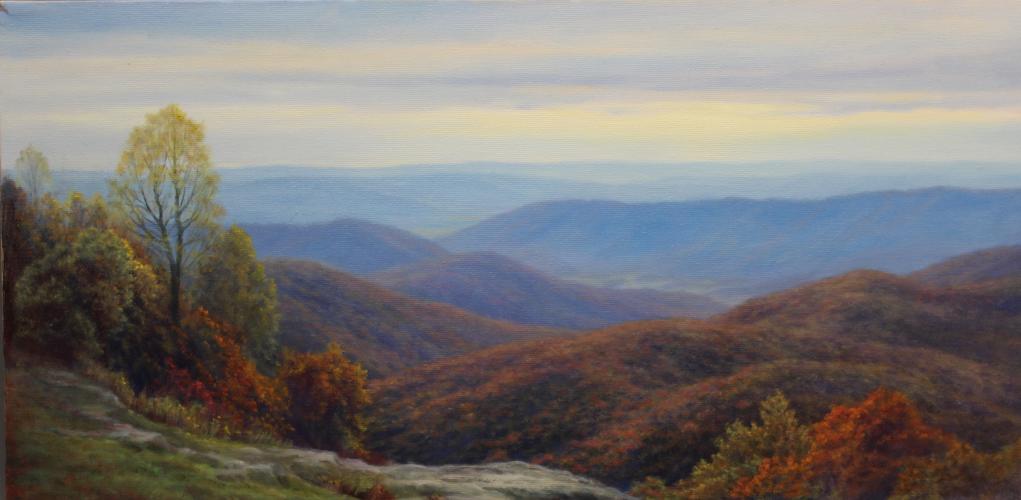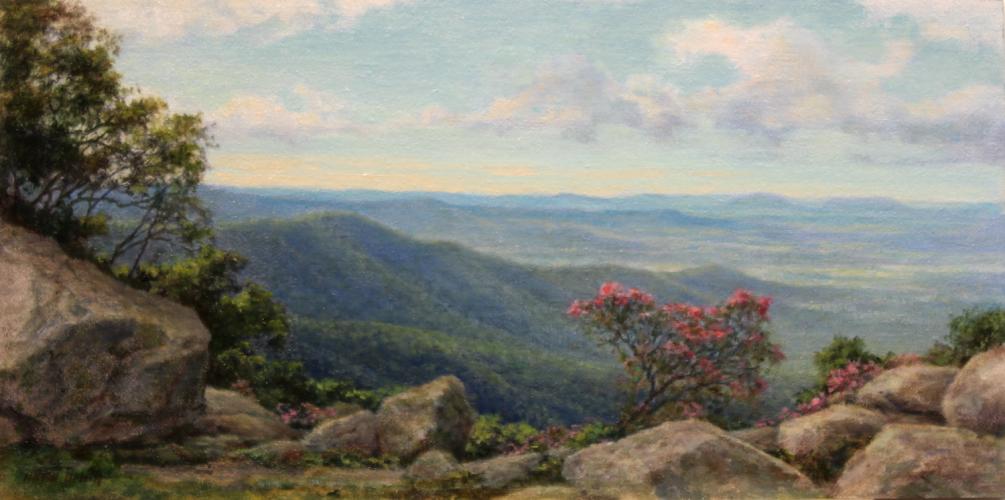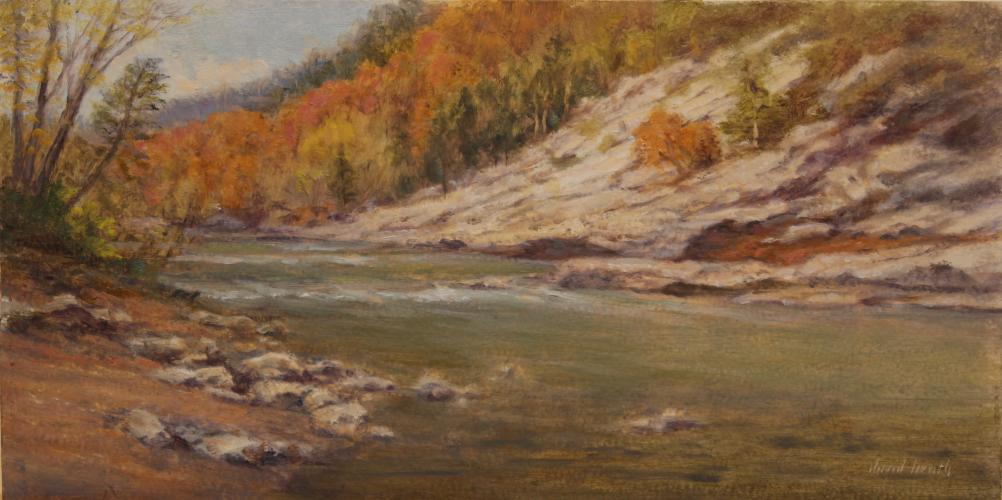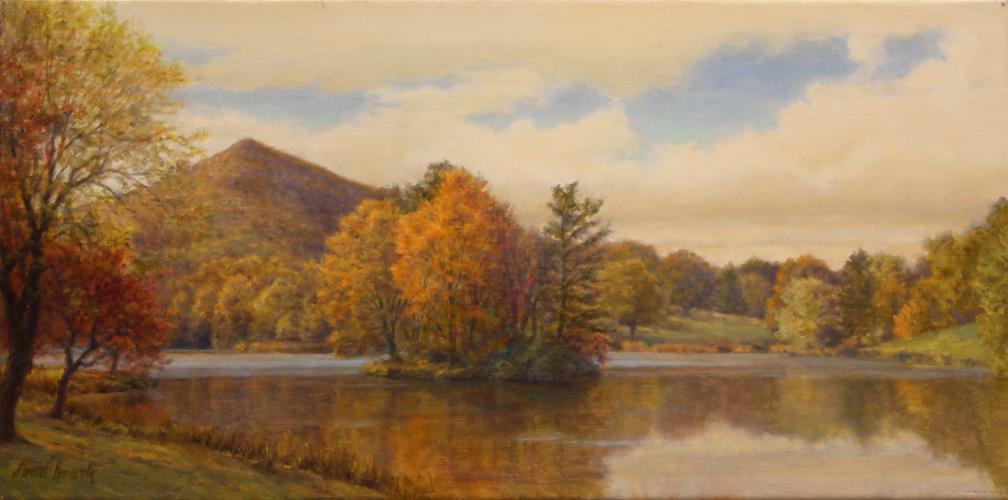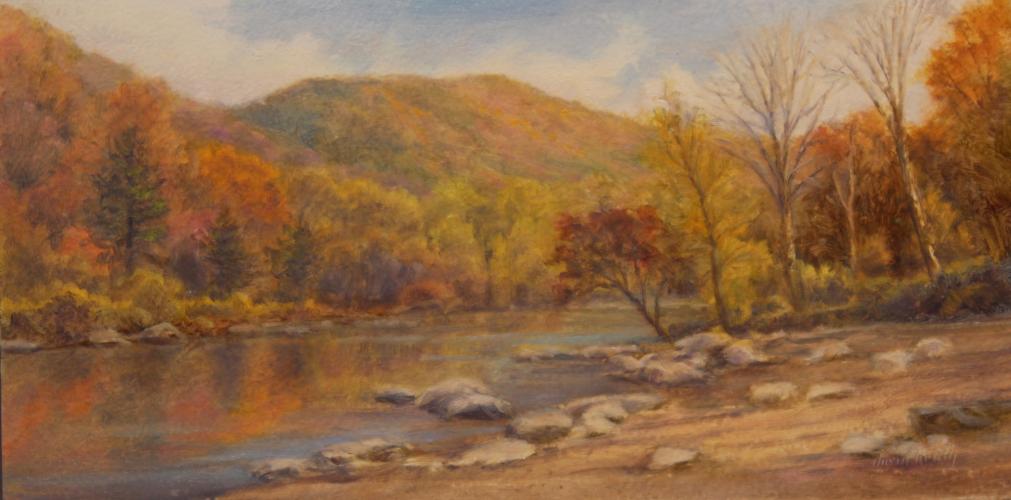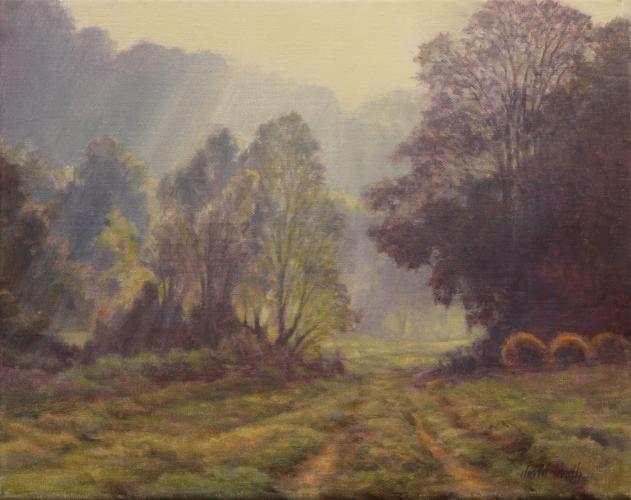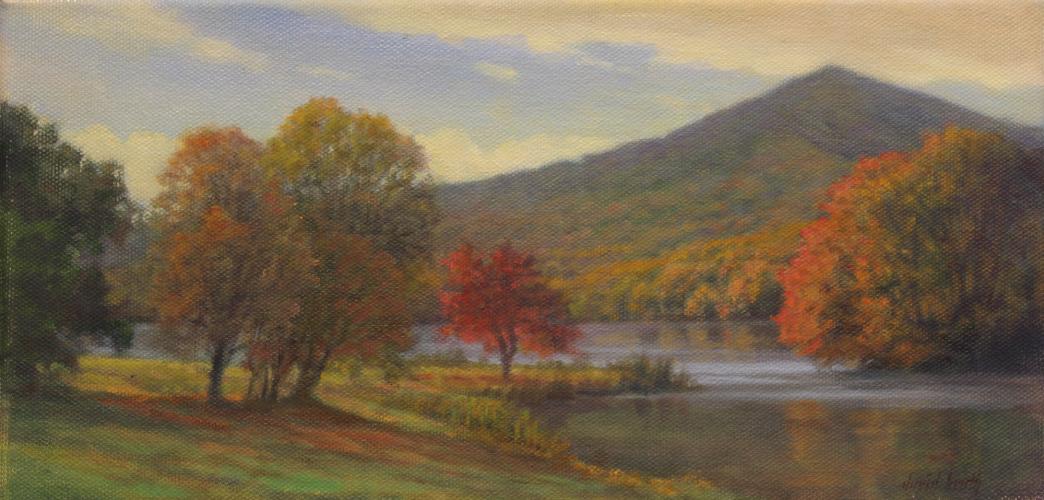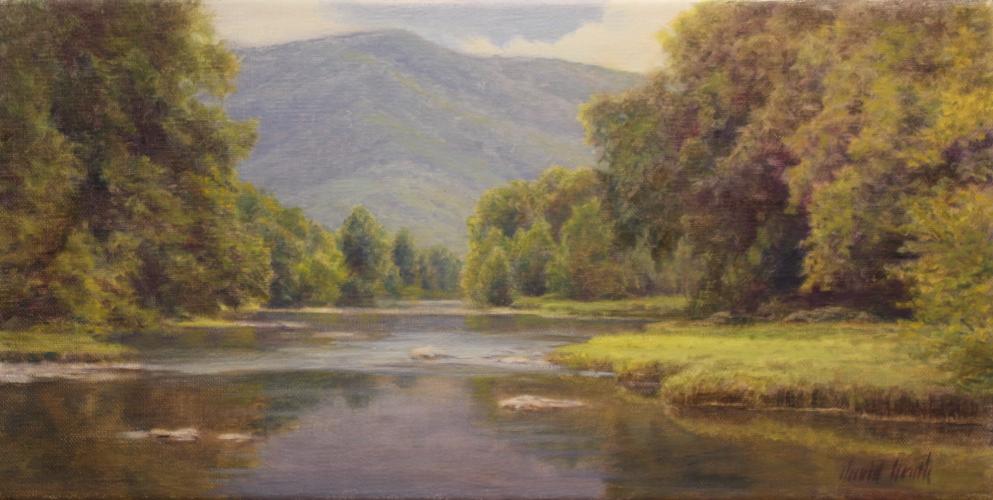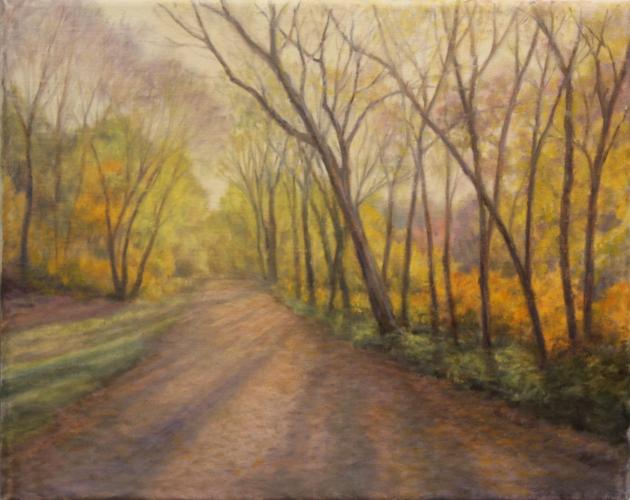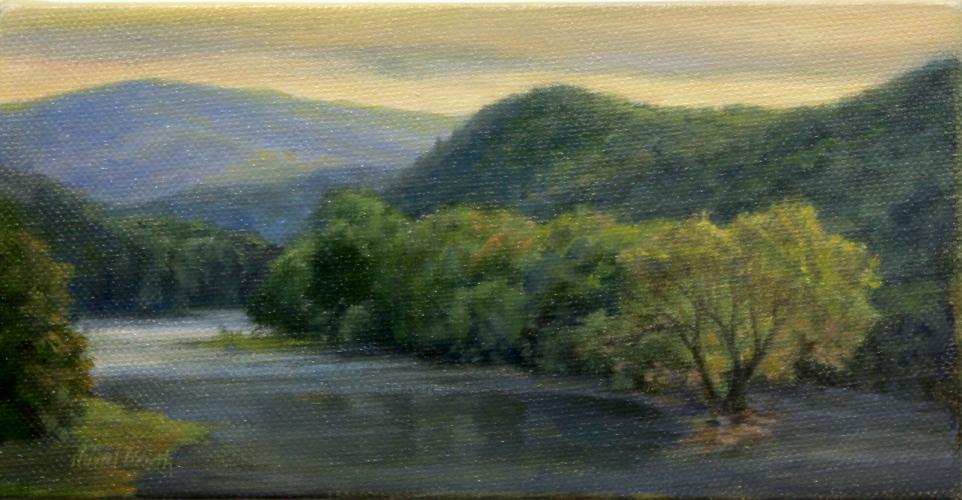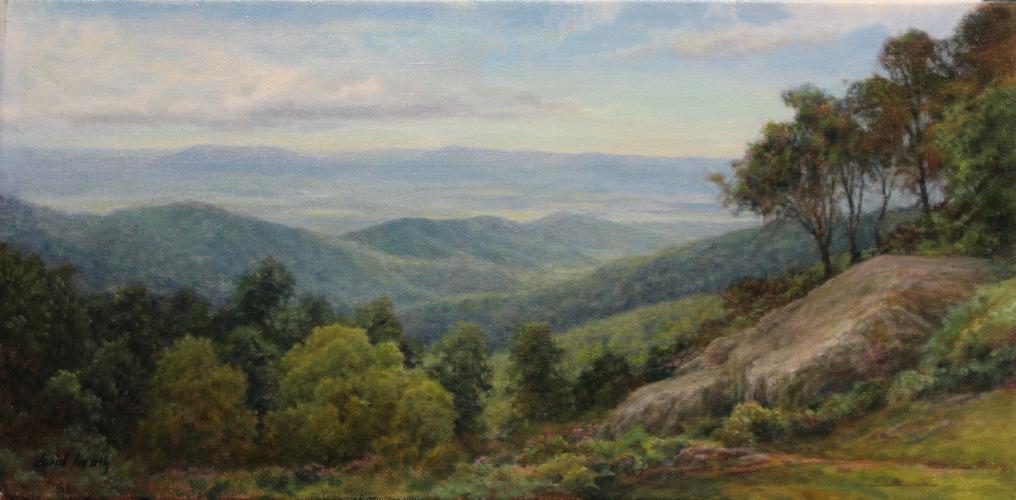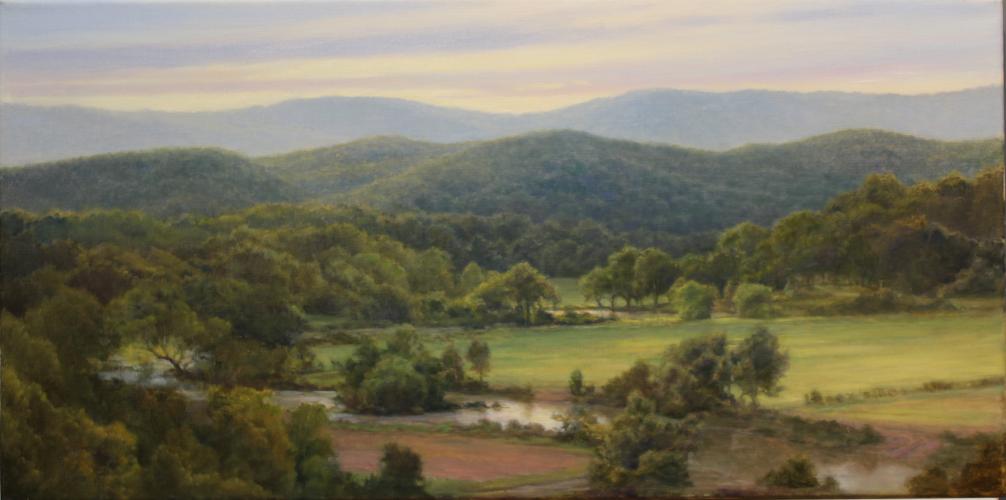October's Featured Artist - David Heath
October 5, 2022 - October 31, 2022Featured Artist for October - David Heath
The Contemporary American Landscape
|
As a visit David G. Heath was born in 1950 in Newport News, Virginia. Educated at Central Virginia Community College and Virginia Commonwealth University, he began his career in commercial art. However, having never doubted, even from earliest childhood, that he would be an artist, and with a lifelong love of nature, Heath soon realized, "my preoccupation with nature and my artistic aspirations could never be separated." He then began an intensive study of early European and American art and, in 1973, left the security of commercial art to continue his study and to begin painting full time. Concentrating his study on 19th century American landscape painting, he developed his own unique methods and style, building upon past conventions and techniques to present important new works of contemporary realism - works that celebrate the beauty and magnificence of our American landscape. Contemporary with respect to technique, style, and vision, Heath's paintings still invite comparison with works from the past masters of 19th century American landscape painting; his work relates to that of these artists with regard to a shared concern for detail, finish, composition, color, light, and atmosphere. |
|
|
Much of Heath's work is characterized by what he terms, "the solitary landscape," a quietist landscape where figures, structures, or other manmade objects are often absent or play only a minimal role in the overall composition. He feels, "that the untouched landscape best communicates a sense of timelessness and serenity to the viewer, while the presence of man...limits the scene to a specific moment in time." Related to this concept of a solitary, unpopulated landscape, Heath says, "One of my most important goals in painting is to encourage the viewer to participate in the scene, in effect to become lost in my world." The curve of a path, the bend in a stream, or an opening in the trees invite the viewer to pause for a time in quiet contemplation of what might lie ahead, just out of sight. Heath paints extensively en plein air; typically using his plein air works as an opportunity to experiment with techniques and approaches he might not ordinarily try in the studio, finding painting out-of-doors to be, "a workshop . . . a great learning experience." While best known for his larger paintings done in the studio, Heath has also become widely recognized for his plein air work. Heath's paintings seldom are exact topographical depictions of a scene, but express his impression or perception of the scene, a sense of feeling and mood refined through memory and contemplation. These paintings are directed to the emotions and imagination of the viewer, and are works not intended to require complex intellectual analysis but, in the artist's words, "to display nature at its most beautiful and memorable and to create a moving experience for the viewer." Heath's home and studio are in Bedford County, Virginia, at the foot of the Blue Ridge Mountains. His paintings are in public, private, and corporate collections in the United States, Europe, and Asia. He continues to paint subjects taken primarily from the Blue Ridge Mountains, lakes, streams, and coastal areas of Virginia and North Carolina, the Adirondack Mountains of New York, and the New England coast. He is a member of the Adirondack Mountain School Painters, Oil Painters of America, the Salmagundi Club, a signature member of The American Society of Marine Artists, and a founding member of the Blue Ridge Plein Air Painters and the Distinguished Council of Advisors for the School of Communication and Creative Arts at Liberty University. |
|
Click below to see the beautiful work from this show.

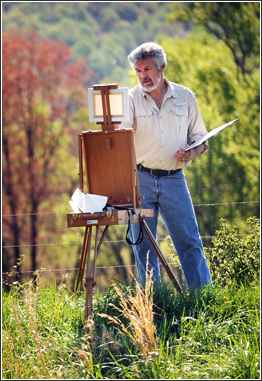 ing artist to Cabell Gallery, David Heath has already caused a stir. No surprise really, he has won more awards than can be listed, multiple "Best in Shows" and "Best Oil Painting." His work has been shown in galleries in New York City and Washington DC, Singapore and Tokyo. His art has graced the pages of dozens of magazines, and David has used this success to spread the beauty of the Blue Ridge.
ing artist to Cabell Gallery, David Heath has already caused a stir. No surprise really, he has won more awards than can be listed, multiple "Best in Shows" and "Best Oil Painting." His work has been shown in galleries in New York City and Washington DC, Singapore and Tokyo. His art has graced the pages of dozens of magazines, and David has used this success to spread the beauty of the Blue Ridge.